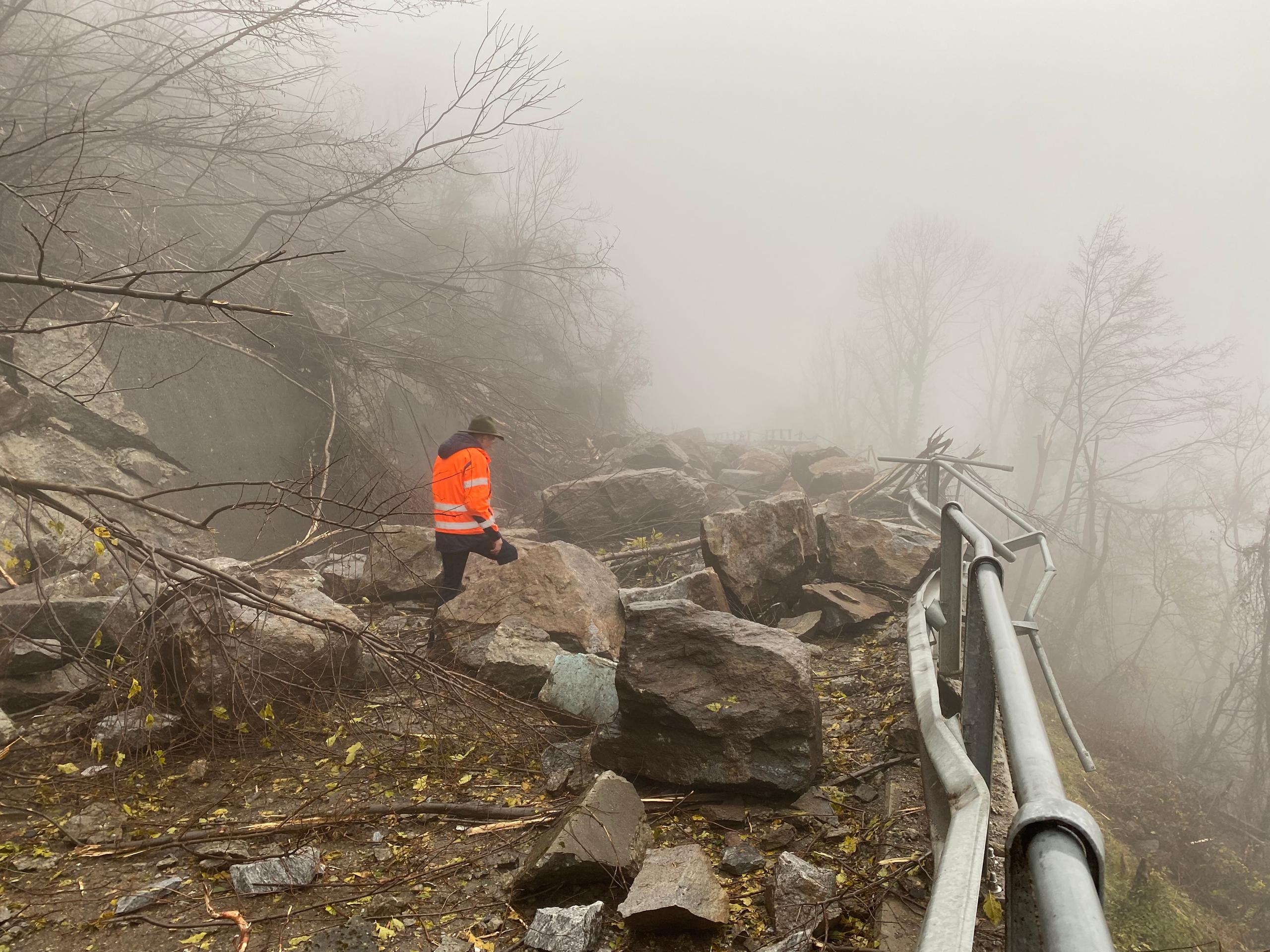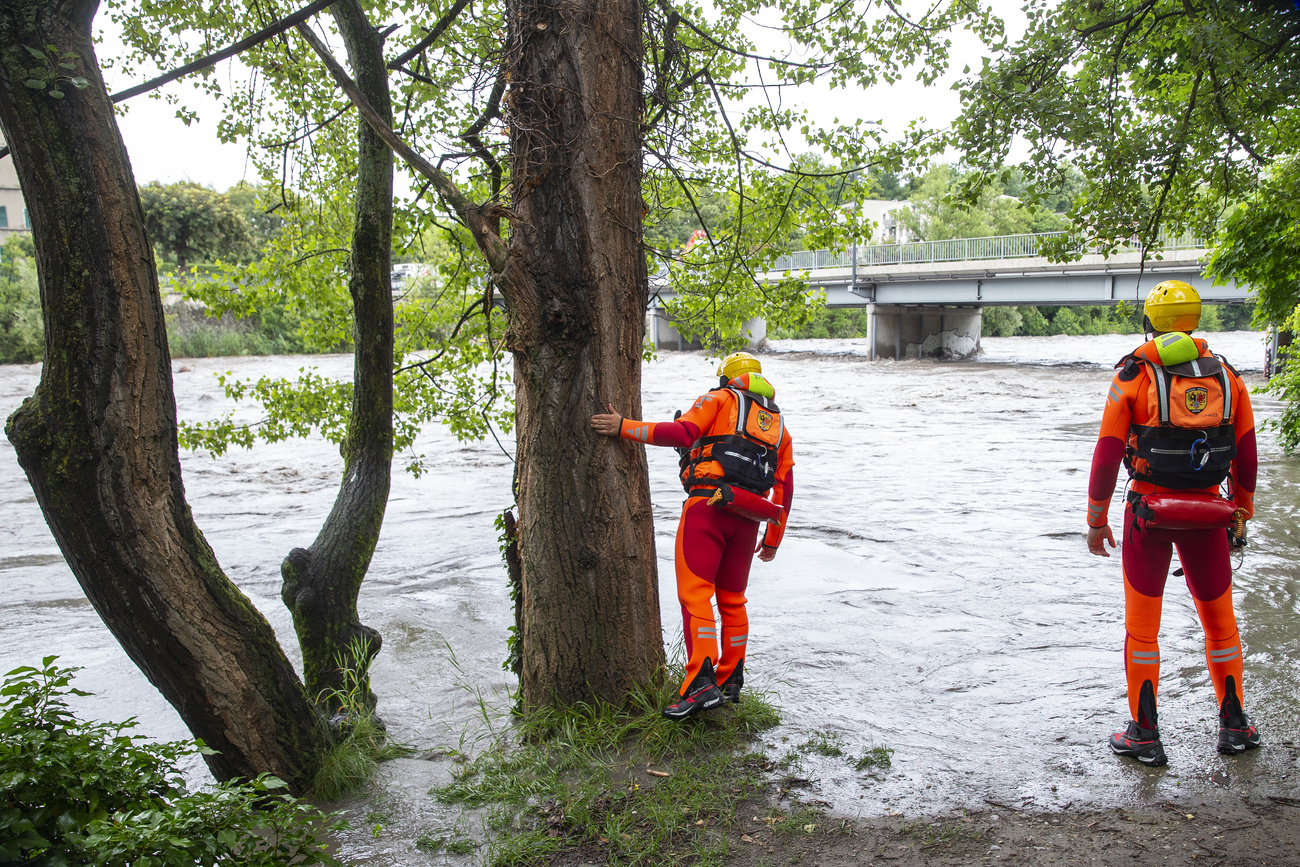
Storms caused ten times less damage in 2022 than in 2021

Storms caused around CHF45million ($49.4 million) of damage in Switzerland last year. That is around a tenth of the damage seen the previous year, according to the Swiss Federal Institute for Forest, Snow and Landscape Research (WSL). There were no fatalities.
The long dry phases in 2022 and the absence of major events are among the reasons for the low damage across the country, the WSL said in a statementExternal link on Thursday.
In the 51-year observation series, 2022 ranks among the ten years with the least damage. Most of the damage was caused by flooding following thunderstorms during the summer. According to the report, 91% of the damage costs was caused by floods, followed by rockfalls and rockslides (4%), landslides (3%) and debris flows (2%). The central plateau and southern Ticino were particularly affected. Only a few loss-causing events were registered for mountain regions.
The greatest damage was recorded after thunderstorms on July 4, 2022. Rivers and streams burst their banks in several cantons. The municipality of Schangnau, in canton Bern, was hardest hit. The River Emme caused great devastation at the Kemmeriboden Bad hotel.

More
Switzerland issues more flood warnings after heavy thunderstorms
Considerable damage was also caused by a rockfall in the Calanca Valley between Castaneda and Buseno in canton Graubünden, eastern Switzerland. Around 600 cubic metres of rock fell to the valley on December 4. The Calanca road was severely damaged and the villages in the Calanca Valley were cut off from the outside world for four days.
Collecting data since 1972
By far the greatest storm damage was recorded in Switzerland in 2005, the WSL data show. That year the cost-adjusted damage total was around CHF3.5 billion. On average, storms have cost CHF304 million annually since 1972.
The WSL has been systematically collecting information on environmental damage since 1972. The database contains information on damage caused by floods, debris flows and landslides. Since 2002, rockfalls, rock avalanches and landslides have also been recorded. Damage as a result of avalanches, snow pressure, earthquakes, lightning, hail, storms and drought are not included in the evaluations.
The estimates are based mainly on media reports. In the case of large and momentous events, the WSL obtains additional information from insurance companies, crisis teams and official agencies.

More
Storm causes damage to miniature Switzerland attraction

In compliance with the JTI standards
More: SWI swissinfo.ch certified by the Journalism Trust Initiative




























You can find an overview of ongoing debates with our journalists here . Please join us!
If you want to start a conversation about a topic raised in this article or want to report factual errors, email us at english@swissinfo.ch.